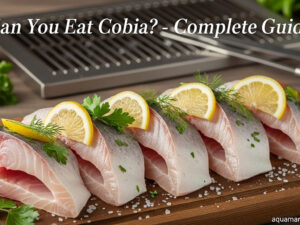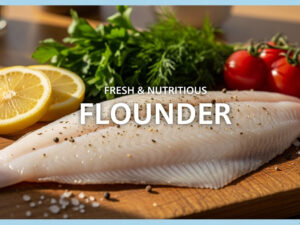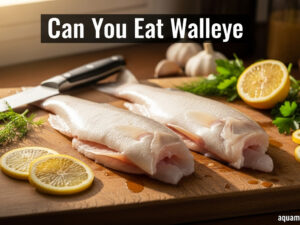Yes, you absolutely can eat lake trout, and they can be delicious when properly caught, handled, and prepared. Despite mixed opinions among anglers, lake trout are not only edible but nutritious, providing high-quality protein, omega-3 fatty acids, and essential vitamins. The key lies in selecting the right size fish, proper handling from catch to kitchen, and using cooking methods that complement their naturally oily texture.
Many anglers avoid eating lake trout due to past experiences with poorly prepared fish, but this comprehensive guide will show you exactly how to turn your catch into a memorable meal. You'll discover why size matters, how to eliminate any "fishy" taste, and the best cooking techniques that even convert skeptical anglers into lake trout enthusiasts.
The Truth About Lake Trout Edibility
Lake trout belong to the char family and are absolutely safe to eat when caught from clean waters and prepared correctly. The controversy surrounding lake trout consumption stems from improper handling and preparation rather than any inherent quality issues with the fish itself.
These cold-water predators can live for decades and grow to impressive sizes, but smaller lake trout between 17-22 inches provide the best eating experience. Larger specimens tend to have softer flesh, stronger flavors, and higher concentrations of environmental contaminants.
The most important factor determining whether lake trout taste good is immediate proper handling after catching. Fish that aren't iced immediately or sit in warm water for hours will develop strong, unpleasant flavors that give lake trout their poor reputation among some anglers.
Does Lake Trout Taste Good? Breaking Down the Flavor Profile
Does lake trout taste fishy? The answer depends entirely on handling and preparation. Fresh, properly handled lake trout has a mild, slightly sweet flavor without the overwhelming "fishiness" many people associate with this species.
Lake trout are naturally oily fish, containing more fat than rainbow or brown trout. This higher oil content can produce a richer flavor that some describe as similar to salmon, though less pronounced. The taste varies significantly based on several factors:
Water Quality Impact: Lake trout from clear, cold, deep waters taste substantially better than those from warm, shallow, or muddy environments. Fish caught from depths below 15 feet typically offer superior flavor.
Diet Influences Taste: Lake trout that feed primarily on small fish and crustaceans develop better flavor than those eating insects or vegetation. Fish with pink-colored flesh (indicating a crustacean-rich diet) generally taste better than those with white flesh.
Size Matters: Smaller lake trout have firmer, milder-tasting meat. Fish under 20 inches rarely have the strong flavors that turn people away from eating lake trout.
Many blind taste tests show people can't distinguish properly prepared lake trout from more popular freshwater fish species. The key is knowing how to select, handle, and prepare them correctly.
Lake Trout Nutritional Value and Health Benefits
Are lake trout good for you? Absolutely. Lake trout nutrition facts reveal these fish are nutritional powerhouses packed with essential nutrients your body needs.
Complete Nutritional Breakdown
A 3.5-ounce (100-gram) serving of cooked lake trout provides:
- Protein: 20.8 grams (37% daily value)
- Calories: 149
- Fat: 6.6 grams
- Omega-3 fatty acids: High levels of EPA and DHA
- Vitamin B12: 373% daily value
- Vitamin D: Excellent source
- Selenium: High amounts
- Phosphorus: Significant levels
- Potassium: Good source
Key Health Benefits
Heart Health: The high omega-3 content supports cardiovascular function, helps reduce inflammation, and may lower blood pressure.
Brain Development: EPA and DHA fatty acids are crucial for neurological development, making lake trout particularly beneficial for pregnant women and children.
Bone Health: The combination of vitamin D, phosphorus, and protein supports strong bone development and maintenance.
Immune Support: High selenium content acts as a powerful antioxidant, supporting immune system function.
Lake trout delivers more omega-3 fatty acids than most freshwater fish, rivaling cold-water species like salmon in beneficial fat content. This makes them an excellent choice for those seeking the health benefits of regular fish consumption.
Mercury and Safety Concerns: What You Need to Know
Are lake trout fish healthy? Yes, but like all predatory fish, lake trout can accumulate mercury and other contaminants over their long lifespan.
Understanding Mercury Levels
Lake trout are top predators that can live 15-25 years, allowing mercury to bioaccumulate in their tissues. Larger, older fish contain higher mercury concentrations than smaller, younger specimens.
The FDA recommends limiting consumption of larger predatory freshwater fish, including lake trout over 16 inches, to once per week for most adults. Pregnant women, nursing mothers, and young children should follow stricter guidelines.
Safe Consumption Guidelines
Adults: Up to 7 ounces per week of lake trout under 20 inches Pregnant/Nursing Women: Limit to 4 ounces per week, choose smaller fish Children: Follow age-appropriate portions, emphasizing smaller fish
Always check local consumption advisories from state health departments, as mercury levels vary by water body. Some lakes have specific recommendations based on testing data.
Reducing Contaminant Exposure
Choose Smaller Fish: Lake trout under 18 inches have significantly lower mercury levels Remove Skin and Fat: Contaminants concentrate in fatty tissues Check Local Advisories: EPA guidelines provide location-specific recommendations Vary Fish Species: Don't eat lake trout exclusively; rotate with other low-mercury fish
What Do Lake Trout Eat? How Diet Affects Taste
Understanding what do lake trout eat helps explain their flavor characteristics and guides your selection process. Lake trout are opportunistic predators with diets that change based on available food sources and water depth.
Primary Diet Components
Alewives and Smelt: In Great Lakes systems, these baitfish form the bulk of adult lake trout diets Ciscoes and Whitefish: In natural lake systems, these species are preferred prey Crustaceans: Smaller lake trout consume amphipods, mysids, and other small crustaceans Insects: Young lake trout feed heavily on aquatic insects and their larvae
How Diet Impacts Flavor
Lake trout with orange or pink flesh have been feeding heavily on crustaceans, which typically produces better-tasting meat. These fish often have a sweeter, less "fishy" flavor compared to those with white flesh.
Fish that feed primarily on alewives may have a stronger, oilier taste due to these baitfish's high fat content. However, proper preparation techniques can eliminate any undesirable flavors regardless of diet.
Proper Lake Trout Preparation: The Foundation of Great Taste
The difference between delicious lake trout and disappointing results lies entirely in proper preparation. Follow these critical steps to ensure excellent results every time.
Immediate Post-Catch Handling
Ice Immediately: Place fish on ice within minutes of catching. Never use stringers in warm water. Bleed the Fish: Cut behind the gills to remove blood, which can cause strong flavors Keep Cold: Maintain ice contact until processing Process Quickly: Clean fish within 24 hours of catching for best results
Essential Filleting Techniques
Remove All Dark Meat: The dark lateral line meat has an unpleasant flavor that will ruin the entire fillet Skin the Fillets: Lake trout skin can contribute muddy flavors Eliminate Red Meat: Cut away any red or dark-colored flesh along the backbone Rinse Minimally: Avoid soaking in water; simply pat dry with paper towels
Pre-Cooking Preparation
Brine Solution: Soak fillets in saltwater (1 tablespoon salt per cup water) for 30 minutes to draw out any remaining blood Milk Soak: For stronger-tasting fish, soak in milk for 30 minutes before cooking Cut Appropriate Sizes: Small, evenly-sized pieces cook more uniformly than large fillets
Similar preparation techniques work well for other freshwater species, as detailed in our guides to eating bass and smallmouth bass consumption.
Best Cooking Methods for Lake Trout
Is lake trout good to eat? When cooked using these proven methods, absolutely. The key is choosing techniques that complement lake trout's naturally oily texture while eliminating any unwanted flavors.
Pan-Fried Lake Trout (Most Popular Method)
This classic preparation converts even skeptical anglers into lake trout fans:
- Heat vegetable oil in a cast-iron skillet over medium-high heat
- Season fillets with salt, pepper, and your favorite spices
- Dredge in flour or cornmeal for a crispy coating
- Cook 2-3 minutes per side until golden brown and flakes easily
- Don't overcook - the fish should still be moist inside
The hot oil should make the fish sizzle immediately upon contact. If pieces curl up quickly, the oil is too hot.
Smoking Lake Trout (Premium Method)
Smoking transforms lake trout into a delicacy that rivals expensive store-bought options:
Dry Brine: Mix brown sugar, salt, and spices; coat fillets for 24 hours Air Dry: Form a pellicle by drying fillets until slightly tacky Smoke Low: Start at 150°F for 2 hours, then increase to 200°F Finish at 160°F internal temperature for food safety
Many anglers report that smoked lake trout tastes better than salmon when prepared correctly.
Grilling Techniques
Direct Heat: For smaller pieces, grill directly over medium heat Indirect Heat: For whole fillets, use indirect heat to prevent overcooking Oil the Grates: Prevent sticking with well-oiled cooking surfaces Don't Flip Too Early: Allow proper searing before turning
Baking Methods
Baking works well for larger fillets:
- 375°F for 15-20 minutes depending on thickness
- Use parchment paper to prevent sticking
- Add herbs and lemon for enhanced flavor
- Check internal temperature reaches 145°F
Common Mistakes That Ruin Lake Trout
Avoiding these errors ensures your lake trout meals are consistently delicious:
Handling Mistakes
Leaving Fish Uniced: Even one hour in warm water can spoil the meat Using Stringers: Never keep lake trout on stringers in water above 60°F Delayed Processing: Clean fish within 24 hours of catching Improper Storage: Vacuum-sealed portions last longer than whole fish
Preparation Errors
Leaving Dark Meat: This is the #1 reason people dislike lake trout Soaking in Water: Extended water contact removes flavor and texture Incorrect Filleting: Poor knife work wastes good meat Skipping the Brine: Salt solutions improve flavor and texture
Cooking Mistakes
Overcooking: Lake trout becomes dry and tough when overcooked Wrong Temperature: Too-hot oil burns the outside while leaving the inside raw No Seasoning: Lake trout benefits from proper seasoning Cooking Frozen Fish: Always thaw completely before cooking
Lake Trout vs. Other Trout Species
Understanding how lake trout compares to other popular trout species helps set proper expectations:
Texture Comparison
Lake Trout: Oily, flaky texture when cooked properly Rainbow Trout: Leaner, more delicate flesh Brown Trout: Similar oil content to lake trout but different flavor Brook Trout: Very delicate, mild-tasting meat
Flavor Profiles
Lake trout has a more pronounced flavor than rainbow trout but less than brown trout. The taste falls somewhere between trout and salmon, making it appealing to those who find regular trout too mild but salmon too strong.
Nutritional Differences
Lake trout contains more omega-3 fatty acids than most other trout species due to its higher fat content. This makes it more nutritionally similar to salmon than to leaner trout varieties.
For those interested in other freshwater species, our guides cover largemouth bass and ocean sunfish consumption as well.
Regional Variations and Best Waters
Not all lake trout taste the same. Water quality, depth, and ecosystem health dramatically impact flavor:
Premium Lake Trout Waters
Great Lakes: Lake Superior produces some of the finest-tasting lake trout Finger Lakes: New York's deep, cold lakes create excellent eating fish Northern Canadian Lakes: Pristine waters produce clean-tasting fish High Mountain Lakes: Cold, nutrient-poor waters create mild-flavored fish
Waters to Avoid
Shallow, Warm Lakes: Produce muddy-tasting fish Polluted Waters: Check local consumption advisories Over-Fished Waters: Stunted fish rarely taste good
If you're planning fishing trips, our regional guides for California trout streams, Tennessee trout fishing, North Carolina streams, and New York waters can help you find the best lake trout fishing locations.
Storage and Preservation Tips
Proper storage maintains quality and extends the life of your lake trout:
Fresh Storage
Refrigerate Immediately: Keep at 32-38°F Use Within 2 Days: Fresh lake trout doesn't keep as long as leaner fish Ice Contact: Maintain direct ice contact Drain Regularly: Remove water that accumulates from melting ice
Freezing Guidelines
Lake trout's high oil content makes it challenging to freeze successfully:
Vacuum Seal: Remove all air to prevent rancidity Use Within 3 Months: Longer storage often results in off-flavors Freeze Fresh: Don't freeze fish that's been refrigerated for days Thaw Gradually: Slow thawing in refrigerator preserves texture
Preservation Methods
Canning: Pressure canning works well for lake trout Pickling: Traditional preservation method for oily fish Salt Curing: Creates a firm, flavorful product
Frequently Asked Questions
Does trout taste fishy?
Lake trout can taste fishy if improperly handled or prepared, but fresh lake trout handled correctly has a mild, pleasant flavor. The "fishy" taste usually comes from delayed icing, leaving dark meat on fillets, or cooking fish that's been stored too long.
Are lake trout healthy to eat?
Yes, lake trout are healthy and nutritious, providing high-quality protein, omega-3 fatty acids, and essential vitamins. However, larger fish may contain elevated mercury levels, so following consumption guidelines is important, especially for pregnant women and children.
What size lake trout taste best?
Lake trout between 17-22 inches typically offer the best eating experience. These fish have firm, mild-tasting meat with lower contaminant levels than larger specimens. Fish under 15 inches may not have enough meat to justify keeping.
Can you eat lake trout raw?
No, never eat lake trout raw. Freshwater fish can harbor parasites that are eliminated through proper cooking. Always cook lake trout to an internal temperature of 145°F for food safety.
How do you get the muddy taste out of lake trout?
Remove all dark lateral line meat during filleting, soak fillets in saltwater or milk for 30 minutes before cooking, and ensure the fish was iced immediately after catching. Proper handling prevents muddy flavors from developing.
Does lake trout taste better than salmon?
Taste preference is subjective, but many people find properly prepared lake trout comparable to salmon. Lake trout has a milder flavor than most salmon species while still offering the rich, oily texture that makes salmon popular.
Bottom Line: Lake Trout Are Worth Eating
Can you eat lake trout? Absolutely, and you should give them a try if you haven't already. The negative reputation surrounding lake trout consumption is largely undeserved and stems from poor handling and preparation practices rather than any inherent problems with the fish.
When caught from clean, cold waters, handled properly from the moment they're landed, and prepared using appropriate techniques, lake trout can be absolutely delicious. They offer excellent nutritional value, providing high-quality protein, beneficial omega-3 fatty acids, and essential vitamins.
The key to success lies in selecting fish between 17-22 inches, icing them immediately, removing all dark meat during preparation, and using cooking methods that complement their naturally oily texture. Whether you choose to pan-fry, smoke, grill, or bake your lake trout, following proper techniques will result in meals that convert even skeptical anglers.
Don't let outdated opinions prevent you from enjoying this underutilized resource. Try the preparation methods outlined in this guide, start with smaller fish from quality waters, and discover why more anglers are adding lake trout to their regular menu. Your taste buds might just surprise you with how much you enjoy this often-overlooked freshwater delicacy.
Looking to expand your freshwater fishing knowledge? Explore our comprehensive guides to eating various fish species and discover the best fishing locations across the country. Remember to always follow local regulations and consumption advisories when harvesting fish for the table.



